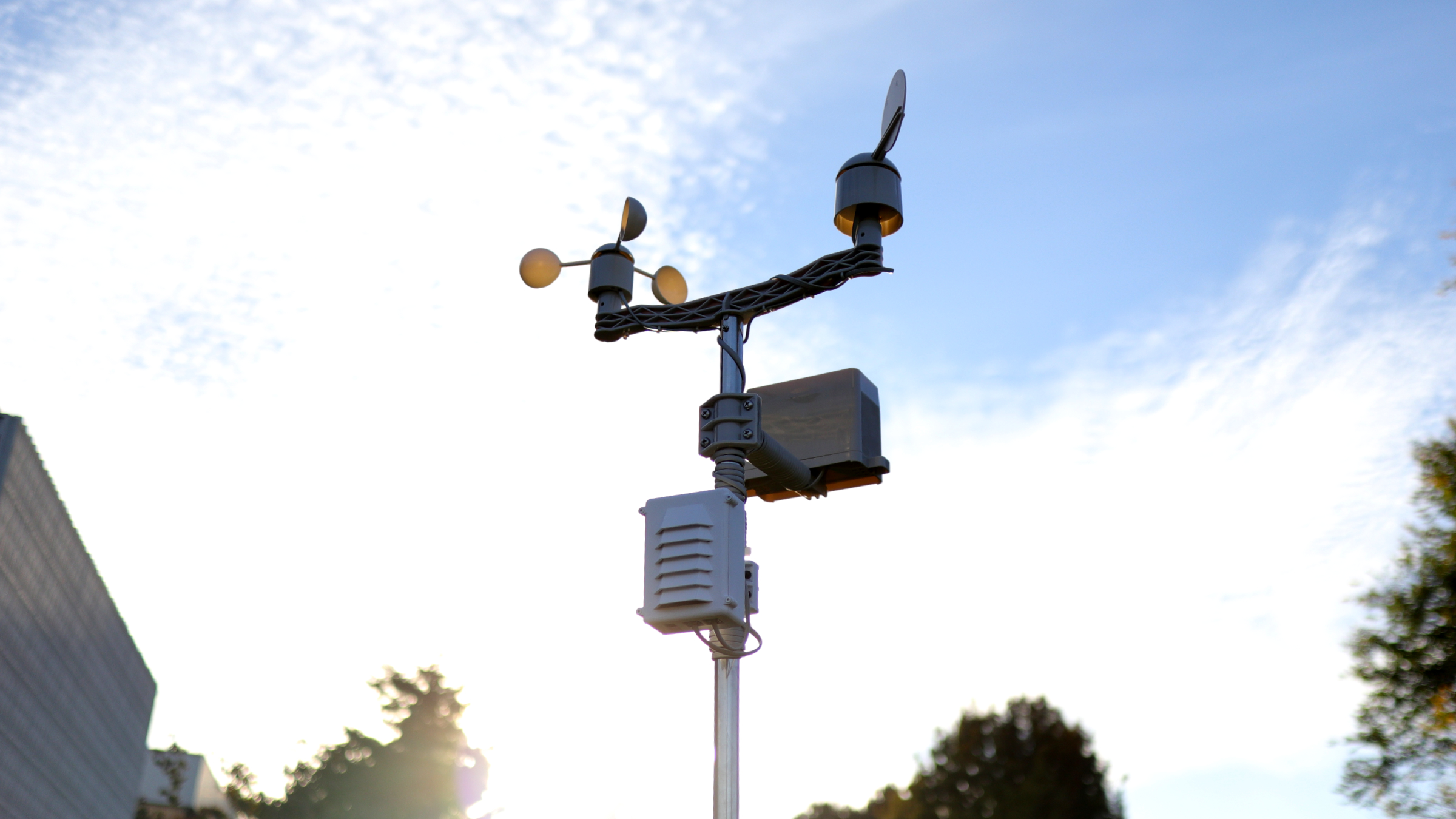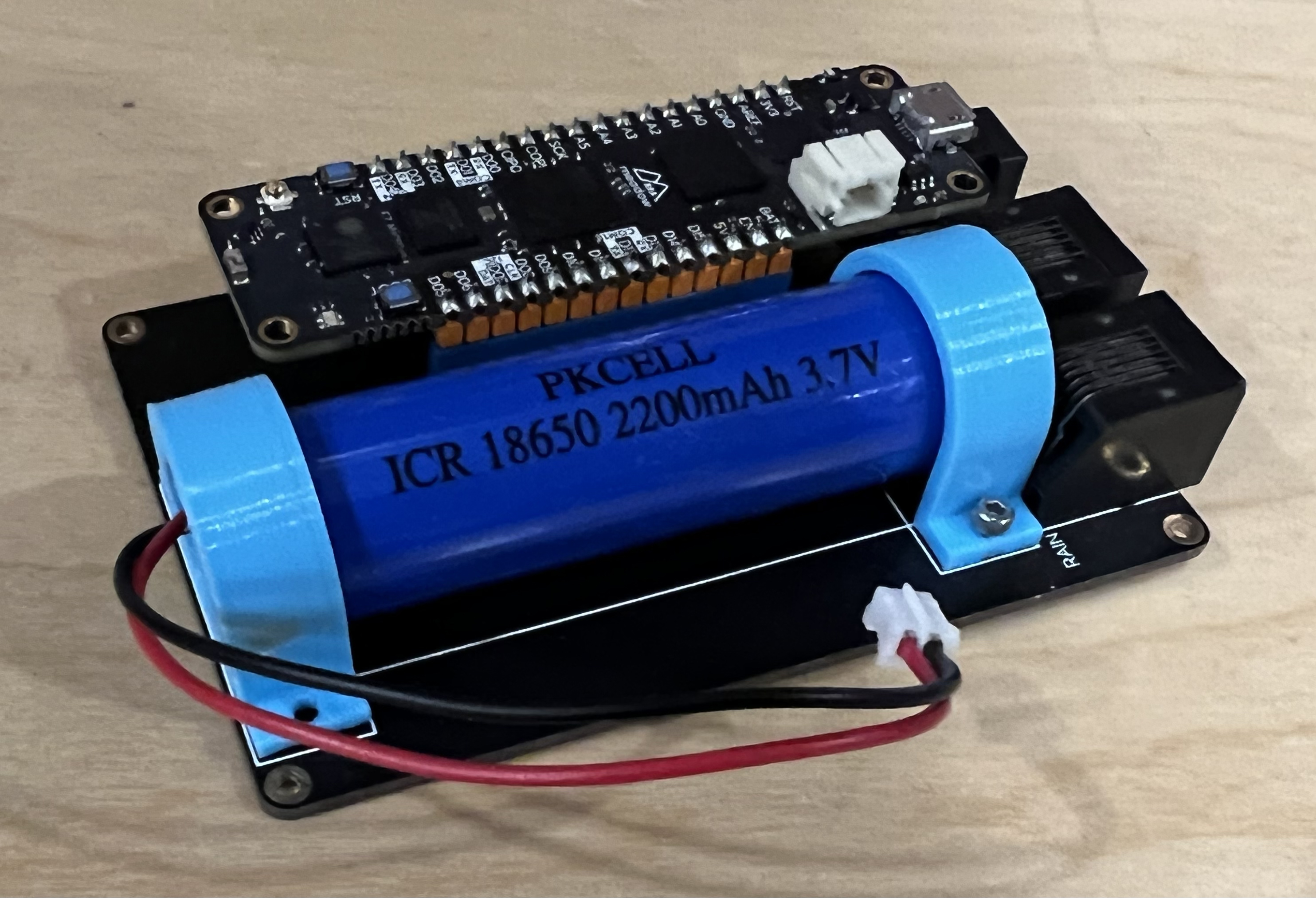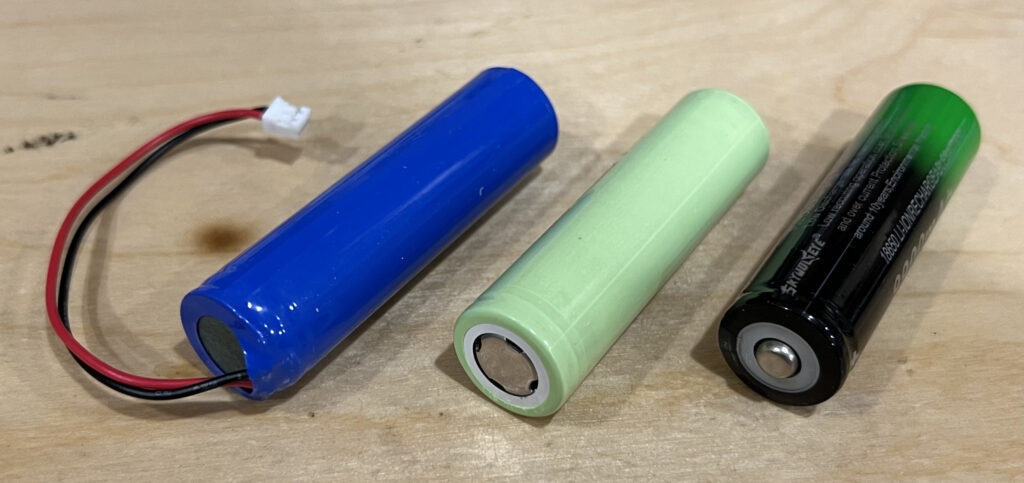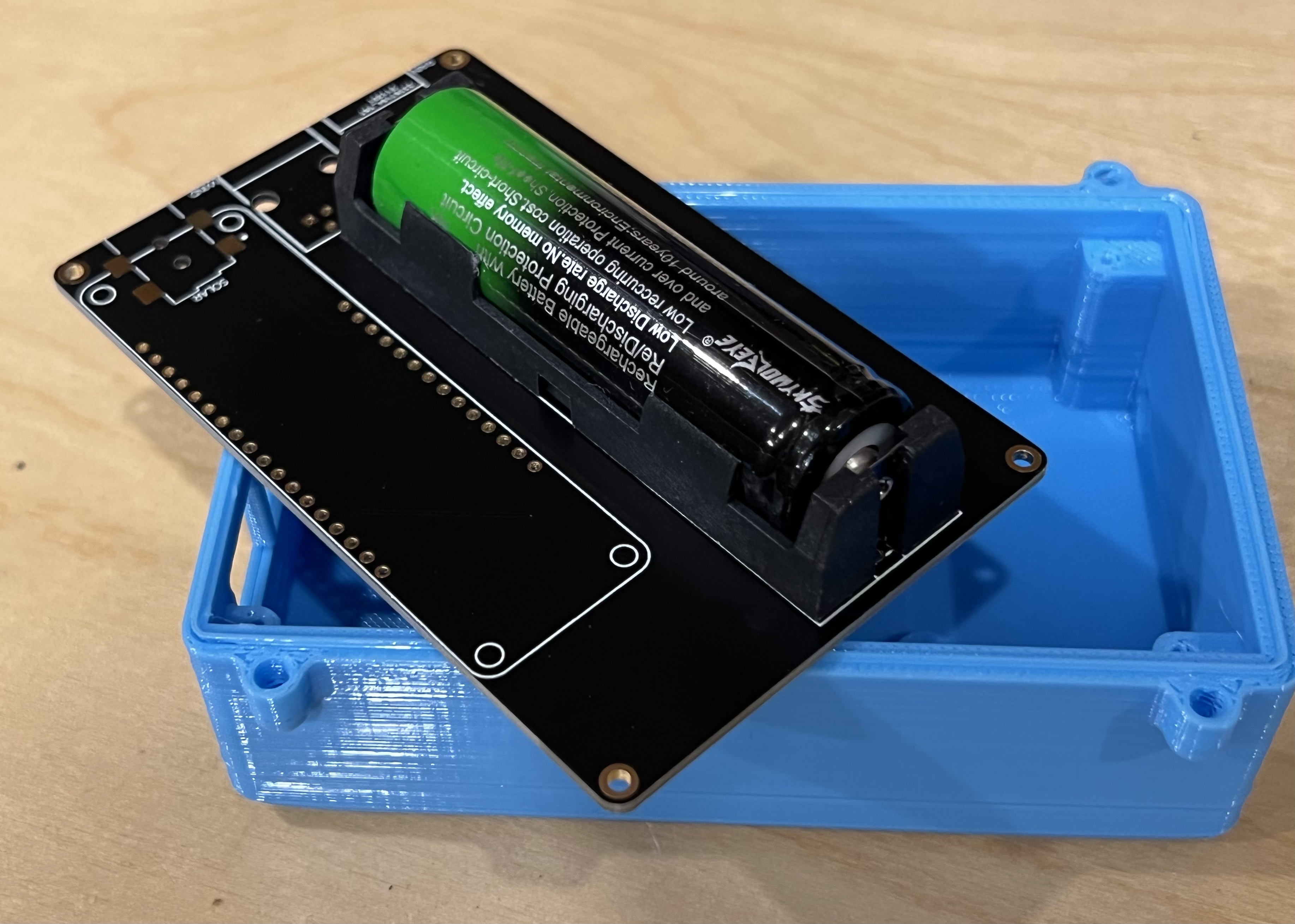Optimizing the Clima Supply Chain: Batteries

Hey folks!
Bryan here, I wanted to share some learning we gained around batteries and the supply chain that might be useful in your own battery-powered, IoT solutions.
As a reference IoT kit, Clima is intended to help our customers accelerate their own production-IoT designs, and as such, we sell clima at a very low margin. Our goal is basically not to lose money on it. However, as we were readying Clima for production and getting parts together, we realized that the cost of the battery solution was very high, and honestly, a little convoluted.
But by making a simple design change to the Clima PCB, we lowered the total cost of the battery in the Clima kit from around USD$10 to $3, while simplifying the design greatly.
When we first prototyped Clima, the design used an 18650 LiIon battery with a JST-PH connector (circled in orange) from Adafruit. I had a few of these batteries lying around, and spun a quick 3D printable mount (shown in light blue) to hold them to the board.

The nice thing about using the JST-PH connector is that you can swap out different sizes and shapes of batteries easily. However, as we started sourcing components for the production Clima kits that we planned on shipping to customers, we discovered that the batteries with those cable connectors cost USD$10+, whereas a standard 18650 cell without a connector was as low as USD$1 (without shipping, which is another story).
For comparison, below is a picture of three different options for these types of batteries. The two batteries on the right differ in that one of them has a polarity nipple, much like standard alkaline batteries, whereas the one in the center doesn’t have any physical polarity indicators.

After a little research I found a nice through-hole mounting bracket for these batteries from Keystone, available in both a polar one (Keystone 1043P), and polarity agnostic (Keystone 1043). Note the one on the top has an “inlet” on the left where the positive/nipple side of the polar battery goes:

The battery mount costs around $2-$3 at the quantities we’re purchasing, so even with the battery cost, it’s still less than half the price of a battery with a cable, plus, it’s a lot more convenient to use and doesn’t require any 3D printed mounts:
In the end, we chose the mount with polarity to help keep folks from installing the batteries incorrectly:

As for the circuit design, it was super easy, all we had to do was hook the positive end of the battery mount to VBAT, and the negative end to GND:

So, if you’re designing a battery-powered piece of IoT, I hope this bit of knowledge is helpful!
Also, if you pre-ordered a Clima kit, they’re coming along nicely, unless we run into issues, we expect to ship out the first batch of kits right around the end of the month.
Until next time,
Bryan


